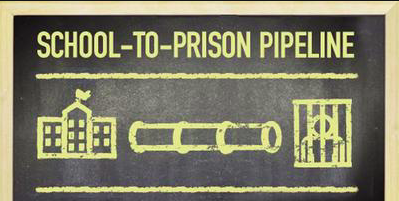The School-to-Prison Pipeline plagues American school systems and perpetuates a cycle of inequality. This problem, as defined by the ACLU, is “a disturbing national trend wherein children are funneled out of public schools and into the juvenile and criminal justice systems.” Specifically, this pipeline has been known to target Youth of Color, LGBTQ students, youth with disabilities and those who are economically disadvantaged. The zero-tolerance policies within the school system criminalizes minor infractions that could and should be handled differently. Subsequently, the prejudice against these groups makes them more vulnerable to suspension and expulsion which has been shown to lead to incarceration and violent behavior as adults.
Nationally, practitioners and teachers have been struggling to break down this system. Surprisingly, the issue is not the teachers. Many teachers are strongly against the zero tolerance policies in schools and due to strong opinions, they have been able to “reduce out of school suspensions by 20 percent” by implementing alternative and restorative approaches to punishment. However, a subproblem to this issue is that the government is not supplying the proper funding to fully break this cycle of inequality. A full reform requires “access to training on implicit bias, school and classroom climate, social-emotional learning, culturally relevant and responsive pedagogy, trauma-informed practices and restorative discipline techniques” (Lowery and Stone, 2017).
In New York City specifically, there is a level of diversity that is unmatched. There is a wide range of different races, abilities, sexualities and socioeconomic status. While this diversity is something to be applauded, it often sparks controversy and disputes. I chose the Big Apple as my focus city because of its diversity and complexity. The varying aspects of research make the problem multifaceted but all the more interesting.
